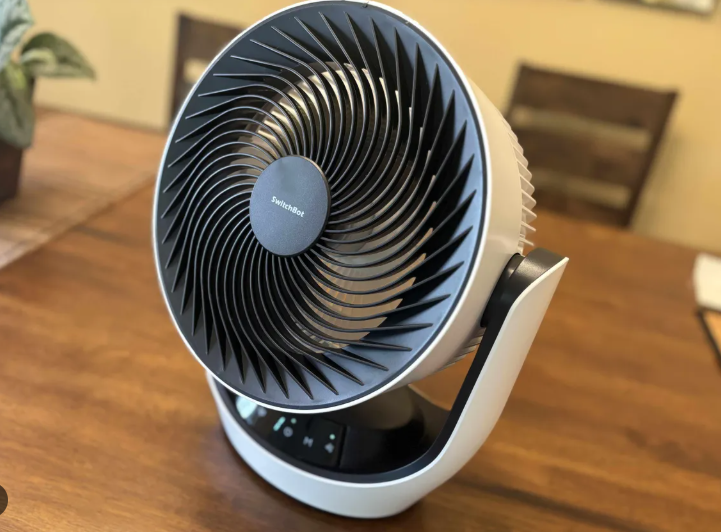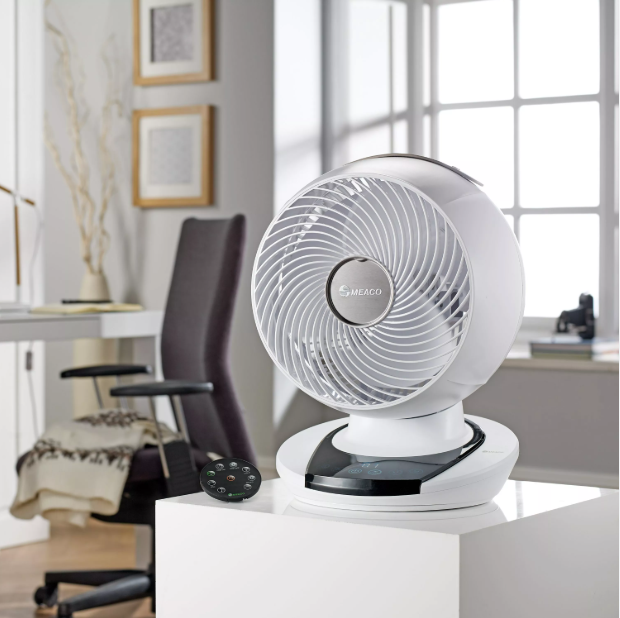Choosing the right electric fan for your home or office involves weighing its advantages against potential drawbacks. This electric fan pros and cons guide explores the benefits and limitations of electric fans to help you decide if they’re the best cooling solution for your needs in 2025. From electric fan setup to electric fan troubleshooting, we’ll cover key considerations, including performance, cost, and maintenance. Whether you’re eyeing a portable electric fan or a powerful tower model, our electric fan tips will guide you to make an informed choice. For more cooling insights, visit our cooling guide.
Why Consider an Electric Fan?
Electric fans are a popular choice for cooling due to their affordability, versatility, and energy efficiency. They deliver targeted airflow, typically using 10-150 watts, costing just 1-3 cents per hour, compared to air conditioners that can consume 1000+ watts. Available in various styles like desk, tower, pedestal, and floor fans, they suit different spaces and needs. This electric fan pros and cons guide breaks down their advantages and disadvantages to help you decide if a fan is right for you.
Pros of Electric Fans
Electric fans offer numerous benefits, making them a go-to cooling solution for many households and workplaces. Here are the key advantages:
- Energy Efficiency: Fans use significantly less power (10-150 watts) than air conditioners, reducing energy bills. A typical fan costs $1-5 per month for daily use, compared to $50+ for AC.
- Affordability: Fans are budget-friendly, with prices ranging from $15 for basic desk models to $150 for premium bladeless or smart fans, far less than AC units costing $500+.
- Portability: Many fans, especially portable electric fans, are lightweight (2-15 pounds) and easy to move, making them ideal for travel, offices, or multiple rooms.
- Variety of Designs: From compact desk fans to sleek tower models, fans cater to different spaces and aesthetics, offering options like oscillation, timers, and smart controls.
- Easy Setup and Use: Electric fan setup is straightforward, requiring minimal assembly and no professional installation, unlike air conditioners.
- Versatility: Fans can be used indoors or outdoors (with certain models), and some include air-purifying or heating features for year-round use.
- Low Maintenance: With regular electric fan cleaning, fans require minimal upkeep compared to complex AC systems.
These benefits make electric fans a practical choice for cost-conscious, eco-friendly cooling.
Cons of Electric Fans
While electric fans have many advantages, they also have limitations. Here are the key drawbacks to consider:
- Limited Cooling Power: Fans don’t lower room temperature; they circulate air to create a cooling effect, which is less effective in extreme heat or high humidity compared to AC.
- Noise Levels: High-speed or floor fans can be noisy (50-65 dB), which may disturb sleep or work, though quieter models (25-40 dB) are available.
- Space Requirements: Large fans like pedestal or floor models may take up floor space or require clearance for oscillation, less ideal for small rooms.
- Safety Concerns: Fans with exposed blades pose risks for children or pets, though bladeless models or tight grilles mitigate this.
- Dust Circulation: Fans can stir up dust or allergens if not cleaned regularly, requiring consistent electric fan maintenance.
- Limited Features in Basic Models: Budget fans may lack advanced features like timers, remotes, or smart controls, reducing convenience.
- Durability Issues: Cheaper models may have less sturdy builds, leading to wobbling or shorter lifespans under heavy use.
Understanding these drawbacks helps you assess whether a fan meets your cooling needs.
Electric Fan Setup: Getting Started
Proper electric fan setup maximizes performance and safety. Follow these steps:
- Unpack and Inspect: Check for all components, such as the base, blades, or remote, ensuring no damage.
- Assemble Securely: Attach the base or other parts as per the manual, using screws or clips for stability.
- Position Strategically: Place on a flat surface, in a corner, or near a window to optimize airflow. Avoid obstructions like curtains.
- Plug In and Test: Connect to power and test speeds, oscillation, and features like timers or smart controls.
Positioning the fan opposite a wall or at a 90-degree angle enhances air circulation. Ensure stability to prevent tipping, especially in homes with kids or pets.

How to Use an Electric Fan Effectively
Maximize cooling with these electric fan tips:
- Use Oscillation: Enable 70-180 degree oscillation to distribute air evenly across the room.
- Create a Cross-Breeze: Place near an open window or door to pull in cooler air, or pair with a bowl of ice for a chilled effect.
- Adjust Speeds: Use high speeds for quick cooling and lower speeds for quiet operation during sleep or work.
- Leverage Timers: Set timers (1-12 hours) to save energy, especially for nighttime use.
Pairing your fan with an air conditioner can enhance cooling efficiency, reducing AC usage and costs.
Electric Fan Maintenance: Keeping It in Top Shape
Regular electric fan maintenance ensures longevity and performance. Follow these steps:
- Clean Regularly: Dust on blades or grilles reduces airflow. See our electric fan cleaning guide below.
- Inspect Cords: Check for fraying or damage to the power cord or plug. Stop using if issues are found.
- Tighten Components: Secure loose screws or parts to prevent vibration or wobbling.
- Store Properly: Store in a dry, dust-free area when not in use to protect components.
Consistent maintenance minimizes drawbacks like dust circulation and ensures reliable operation.
How to Clean an Electric Fan
Electric fan cleaning is essential to prevent dust buildup and maintain air quality. Here’s how:
- Unplug the Fan: Disconnect from power to ensure electric fan safety.
- Remove Grilles or Filters: Detach grilles or air-purifying filters as per the manual, usually by unscrewing or unclipping.
- Clean Blades: Vacuum dust or wipe blades with a dry cloth. Use a damp cloth with mild soap for stubborn dirt, avoiding electronics.
- Wash Grilles/Filters: Soak removable grilles in warm, soapy water, scrub gently, and dry thoroughly. Clean or replace filters as needed.
- Reassemble and Test: Reassemble and test all functions to confirm proper operation.
Clean every 2-4 weeks during heavy use to maintain airflow and reduce allergen circulation.
Electric Fan Troubleshooting: Fixing Common Issues
Even the best electric fan may face problems. Here’s a guide to electric fan troubleshooting:
- Fan Won’t Start: Check the power cord, plug, or outlet. Test the outlet with another device.
- Weak Airflow: Dust buildup can reduce performance. Clean blades, grilles, or filters thoroughly.
- Excessive Noise: Loose parts or debris may cause rattling. Tighten screws or remove obstructions.
- No Oscillation: The oscillation mechanism may need lubrication or repair. Refer to the manual.
If issues persist, contact the manufacturer or a technician to address potential durability concerns.
Electric Fan Safety: Staying Safe
Electric fan safety is crucial to mitigate risks, especially for fans with exposed blades. Follow these guidelines:
- Avoid Water: Keep fans away from water or damp areas to prevent electrical hazards.
- Child and Pet Safety: Choose bladeless fans or tight grilles to protect fingers or paws.
- Limit Continuous Use: Use timers to avoid running the fan all night, reducing overheating risks.
- Inspect Regularly: Check cords, plugs, or components for wear before use.
These precautions address safety concerns and ensure worry-free operation.

Comparing Electric Fan Types: Pros and Cons
Different fan types have unique strengths and weaknesses. Here’s a breakdown to help you choose:
- Desk/Table Fans: Pros: Compact, portable, low-cost ($15-50), great for personal cooling. Cons: Limited airflow (500-1500 CFM), not suited for large rooms.
- Tower Fans: Pros: Sleek, wide oscillation, quiet (25-40 dB), ideal for medium rooms. Cons: Cleaning internal blades can be tricky, less powerful for very large spaces.
- Pedestal Fans: Pros: Adjustable height, strong airflow (1500-3000 CFM), versatile. Cons: Takes up floor space, can be noisy on high (45-60 dB).
- Floor Fans: Pros: High-velocity airflow (3000-7000+ CFM), durable for large spaces. Cons: Noisy (50-65 dB), less stylish, may lack oscillation.
- Bladeless Fans: Pros: Safe, stylish, often with air purification. Cons: Expensive ($100-400), lower airflow (1000-2000 CFM).
Consider your room size and priorities (e.g., noise, safety, or power) when selecting a fan type.
Best Electric Fan Guide: Top Picks for 2025
Based on recent testing and user feedback, here are the top electric fans for 2025, balancing pros and cons for optimal cooling:
- Vornado 660 Large Air Circulator (Floor): Delivers 397-5100 CFM with four speeds, circulating air up to 100 feet. Pros: Powerful, energy-efficient (43-53 watts), quiet (30-50 dB). Cons: No remote, cleaning is complex. Best for: Large rooms needing strong airflow.
- Dreo Nomad One Tower Fan: Offers 1600 CFM with four speeds, 90-degree oscillation, and a 1-8 hour timer. Pros: Quiet (28 dB), stylish, remote-controlled. Cons: Tricky to clean internal blades. Best for: Quiet bedroom cooling.
- Shark FlexBreeze Pro Mist (Pedestal): Provides 1200-1800 CFM with five speeds and a 1-7 hour timer. Pros: Versatile (converts to tabletop), battery-powered, misting feature. Cons: Noisier (40-50 dB), heavier (12.2 pounds). Best for: Indoor/outdoor use.
- Honeywell QuietSet Tower Fan: Delivers 1000-1500 CFM with eight speeds and a 1-8 hour timer. Pros: Ultra-quiet (25 dB), affordable, remote-controlled. Cons: Assembly requires screws. Best for: Budget-friendly, quiet cooling.
- Dyson Purifier Cool Gen1 TP10 (Bladeless): Offers 1000-1500 CFM with 10 speeds and a HEPA filter. Pros: Safe, stylish, quiet (30 dB), smart controls. Cons: Expensive, lower airflow. Best for: Families needing air purification.
These models address key pros (efficiency, power, quietness) while minimizing cons (noise, safety risks), making them top choices in our electric fan pros and cons guide.
Conclusion: Weighing Electric Fan Pros and Cons
This electric fan pros and cons guide has outlined the benefits and limitations of electric fans to help you choose the best electric fan for 2025. Fans offer energy efficiency, affordability, and versatility but may fall short in extreme heat or noisy environments. By mastering electric fan setup, electric fan cleaning, and electric fan troubleshooting, you can maximize benefits and mitigate drawbacks. Prioritize electric fan safety and electric fan maintenance for long-lasting performance. Whether you opt for the powerful Vornado 660 or the sleek Dyson TP10, these fans deliver effective cooling. For more tips, visit maintenance tips.